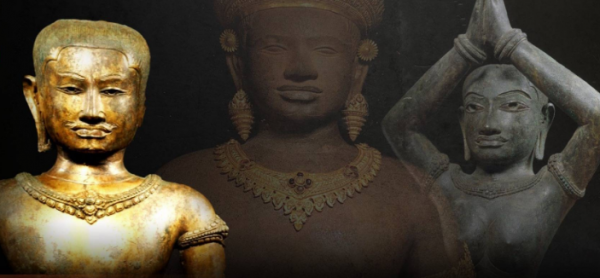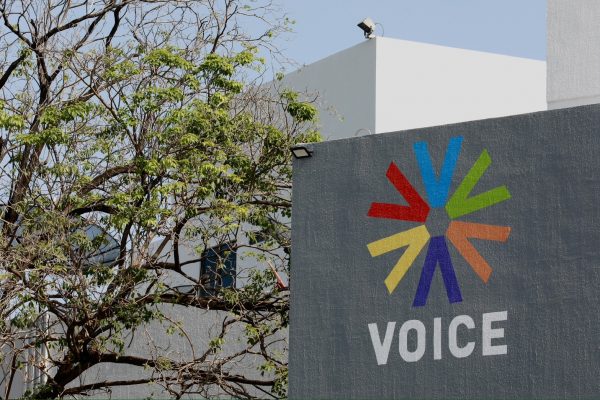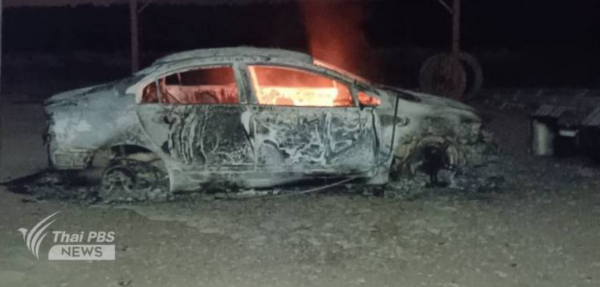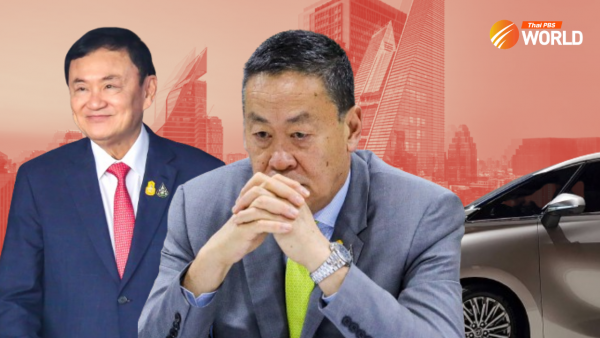Hammer and sickle campaign may backfire on protest movement

The student-led anti-establishment movement has impressed many observers with its creative and thought-provoking strategies during five months of protests. But a recent campaign launched by the movement’s Free Youth group has drawn more criticism than applause even from pro-democracy activists.
Launched on December 7, the RT (Restart Thailand) campaign features a red logo with the letters R and T, which are styled to resemble the hammer and sickle symbol used by communist parties to represent workers’ unity.

“This is a new movement where nothing will be the same,” the group declared on its Facebook page.
“We will awaken the consciousness of oppressed workers. No matter if you are students, office workers, housemaids, plainclothes security guards, farmers or civil servants, we are all workers who are oppressed,” the statement said.
Under the RT movement, “there will be no leaders, no stages, no guards, no mobile toilets, no negotiations, and no bargaining”, it added.
“Please join Restart Thailand to build a society where ‘everyone is equal’.”
Three days before the announcement, the group published a post about “a republic” on its Facebook page.
“A republic is a popular form of government all over the world. It focuses on decentralisation. Rulers must come from free and fair elections, not bloodlines. There is no blue blood, or blood of any other colour except ‘red’.”
The group also quoted Thomas Paine, architect of the American Revolution: “For all men being originally equals, no one by birth could have the right to set up his own family in perpetual preference to all others forever.”
Free Youth is a core faction of the anti-establishment movement, which is making three major demands – the removal of PM Prayut Chan-o-cha, a new, democratic Constitution and reform of the monarchy.
It was also the first group to organise rallies against the Prayut government. Its leaders include Tattep “Ford” Ruangprapaikitseree and Jutatip “Ua” Sirikan.
Call for a Communist Republic?
Interpreted by some as calling for a communist-style republic in Thailand, the group’s latest campaign drew a stern response from the prime minister.
General Prayut ordered the government’s legal team to consider whether the call was against the law.
“I have no comment, because Thailand is not a republic. That’s impossible,” Prayut said.
Thai studies anthropologist Edoardo Siani warned that the logo’s link to communism was “dangerous”, given the Thai state’s history of labelling its critics as communists in order to legitimise violence against them.
“Very disappointed to see this Marxist identity being superimposed onto the movement,” he wrote on Facebook. “First, the association to communism is dangerous. Propaganda in the Cold War served to legitimise state violence against ‘communists’.”
Meanwhile Nantiwat Samart, former deputy director of the National Intelligence Agency, questioned the campaign’s switch from student activism to a battle for oppressed workers.
“What is RT? What does Restart Thailand mean? At what point [do they want] Thailand to restart? The country has come this far – very far. Where [do they want] to move backwards to?” Nantiwat wrote in a December 9 post on Facebook.
Who would join the movement, given that “the workers’ struggle had ended in 1917 and the Communist Party of Thailand had been dissolved?” he asked.
“Please don’t tell us that RT stands for ‘Republic of Thailand’. [This campaign] will certainly land them in jail because it violates the Constitution and other laws. It may be considered ‘treason’,” Nantiwat added.
Academic Somsak Jeamteerasakul, a staunch critic of the monarchy who is self-exiled in France, voiced uncertainty over the logo and the campaign’s apparent call for a republic.
Instead, he said, he backed the 10-point manifesto for monarchy reform issued by another pro-democracy group, Ratsadon 2563.

Ratsadon 2563 was formed by the United Front of Thammasat and Demonstration, a core group of the anti-establishment movement. It launched the 10 demands for royal reform in August, aiming to curb the power of the Palace. Debate on the monarchy is considered taboo in Thailand, where the King is protected from insults and criticism by the draconian “lese-majeste” law, which carries penalties of up to 15 years in jail.
Somsak described the manifesto as a “substantive” and “practicable” document that enabled “interested people to think and make a decision”.
Meanwhile pro-democracy activist Sombat “Nuling” Boonngam-anong said it was absurd to interpret the logo as pro-communist, despite the hammer and sickle’s association with communism. However, he suggested the group find a different symbol, since farmers no longer used sickles as tools of their trade.
Firebrand activist Srisuwan Janya offered a sterner rebuke to Free Youth’s new logo. The secretary-general of the Association for the Protection of the Thai Constitution suggested that the government bring back the Anti-Communism Act BE 2495, revoked in 2000, in order to stop any illegal campaign or actions that would cause chaos in society.

The Anti-Communism Act was issued under the regime of Field Marshal Plaek Pibulsongkram against a backdrop of communist insurgency spreading through Southeast Asia.
Srisuwan added that the hammer and sickle is a symbol of communism whose ultimate goal is to abolish feudalism, monarchy and the class system, which is not in line with Thai history and traditions.
But some observers see the symbol as a tactic to draw more allies.
General Bunchon Chawansin, a retired general and writer on military history, said the group was using it to relay a message and attract support from other activists. It was premature to assume the hammer and sickle logo meant Free Youth had adopted communism, he added.
“It’s like a person who wears a military uniform. It doesn’t mean he wants to be a military officer, he may just like the uniform.”
Losing Allies
Observers warn the pro-democracy movement could lose allies over a campaign seen as too “radical”. They suggested the protesters instead stick to their original three core demands.
Student leaders, however, dismissed the negative feedback and said they were glad to see the move had sparked public debate.
Free Youth co-leader Jutatip said they launched the RT campaign to start a conversation about what different people believe in.
“I don’t feel disheartened. And there is no need to offer any explanation. In a democratic and diverse society, each person has his or her own interpretation and thoughts [about social values],” she said.
Asked if the campaign was an attempt to promote communism, she replied: “I don’t know how people see communism, but we focus on equality and rights and freedom. There are several systems of rule in the world, but we think the democratic system is the best. But how it [democracy system] is applied is a topic that needs to be discussed.”

Panupong “Mike” Jadnok, chairman of a group called Eastern Youth for Democracy, said the campaign was not pro-communist but in fact pro-equality.
“The hammer may symbolise labourers and the sickle, farmers. We have to focus more on these groups so they get an equal share of state benefits and welfare.”
By Thai PBS World’s Political Desk






